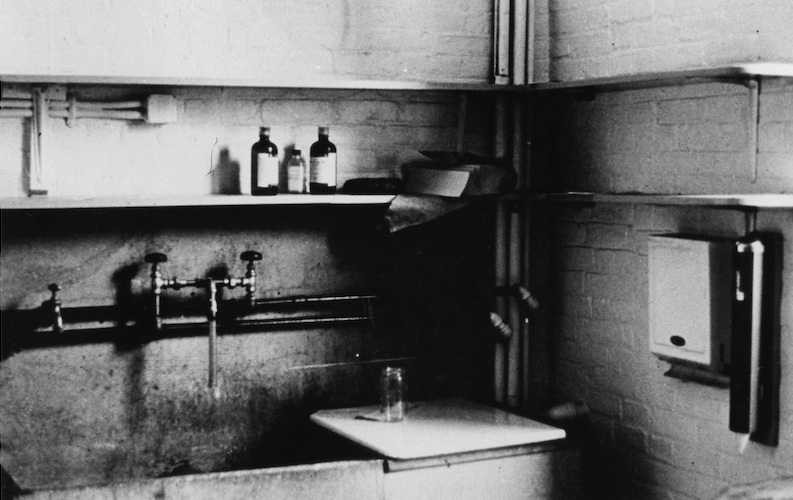V – Vaccine

The research team of Enders, Weller and Robbins succeeded in their goal to isolate and culture the poliovirus in tissue in 1949, paving the way for vaccine development to begin. Later that same year, a nationwide trial of the Salk vaccine, created by Jonas Salk of the University of Pittsburgh, began.
The life-saving research was accomplished under makeshift conditions – Weller frankly described Enders’ lab as a “dirty hole.” In its early days it had limited funding, which meant no sterile hoods for working with viruses and no protective apparatus. Glassware was in short supply and had to be reserved in advance. The lab was located in the Carnegie Building, a small research facility that used to stand across from the Bader building on Boston Children’s campus.



In April of 1955, the trials were determined 80-90% effective against paralytic polio, and the vaccine was licensed by the US government the following day. Unfortunately, distribution came too late to prevent a major polio epidemic during the summer of 1955.
Between 1963 and 1999, a live, oral vaccine developed by Albert Sabin of University of Cincinnati largely replaced the Salk vaccine. However, because the live virus in the vaccine occasionally became strong enough to cause actual disease, Salk’s “killed” virus vaccine replaced the live type in the United States.


Polio majorly shaped the landscape of Boston Children’s Hospital but also at large medicine and healthcare, science, and society for the entire 20th century. The impacts of the disease and our response to it are still apparent to this day.
The road to eradication of polio spurred by the work of Enders, Weller and Robbins in the 1940s taught many lessons about the power, and difficulties, of immunization, from vaccine development to clinical trials and distribution. Due to vaccination programs, “wild” polio was declared eradicated in the United States in 1979, and the American continents in 1994. With the declaration by the World Health Organization of Africa to be wild polio-free in August 2020, eradication of polio globally now stands at about 90%.
